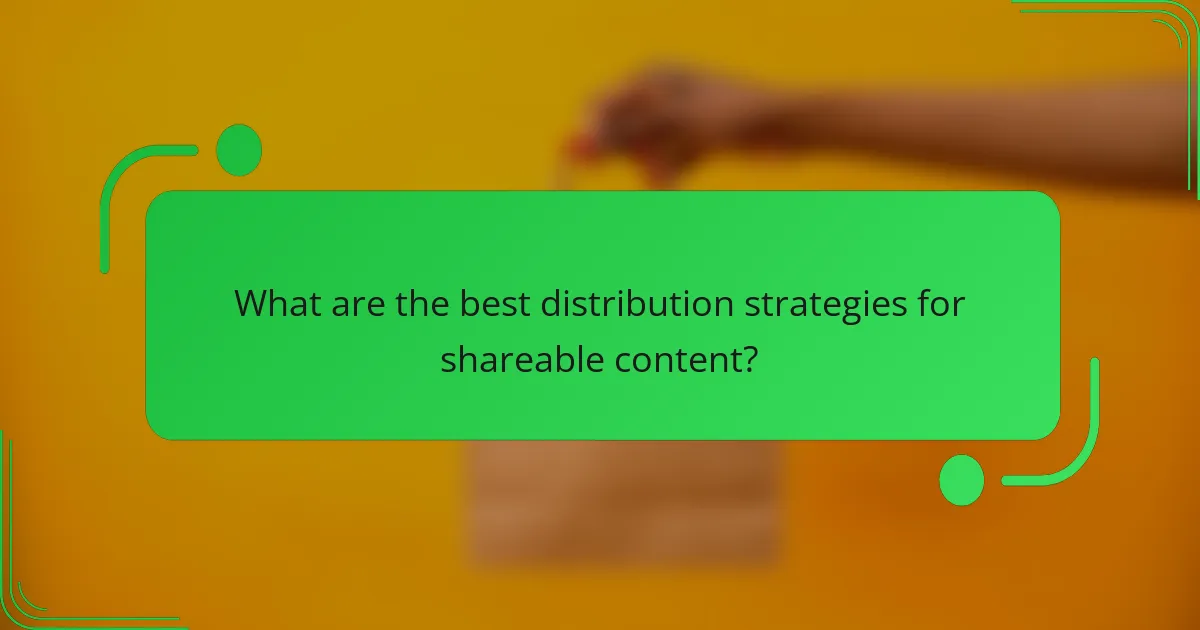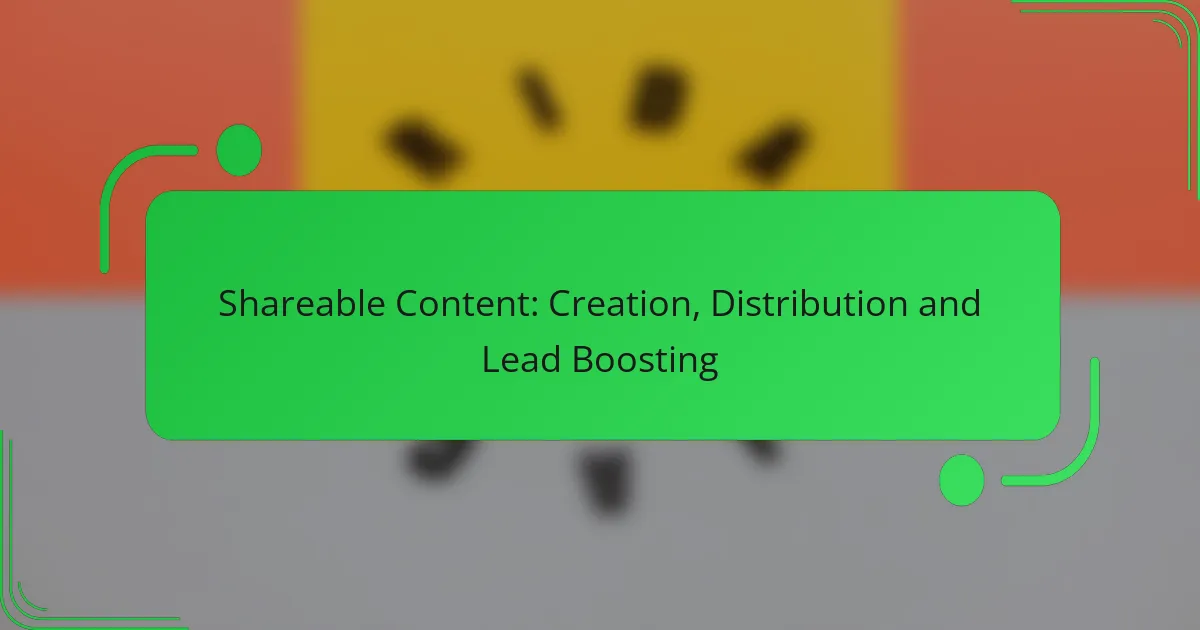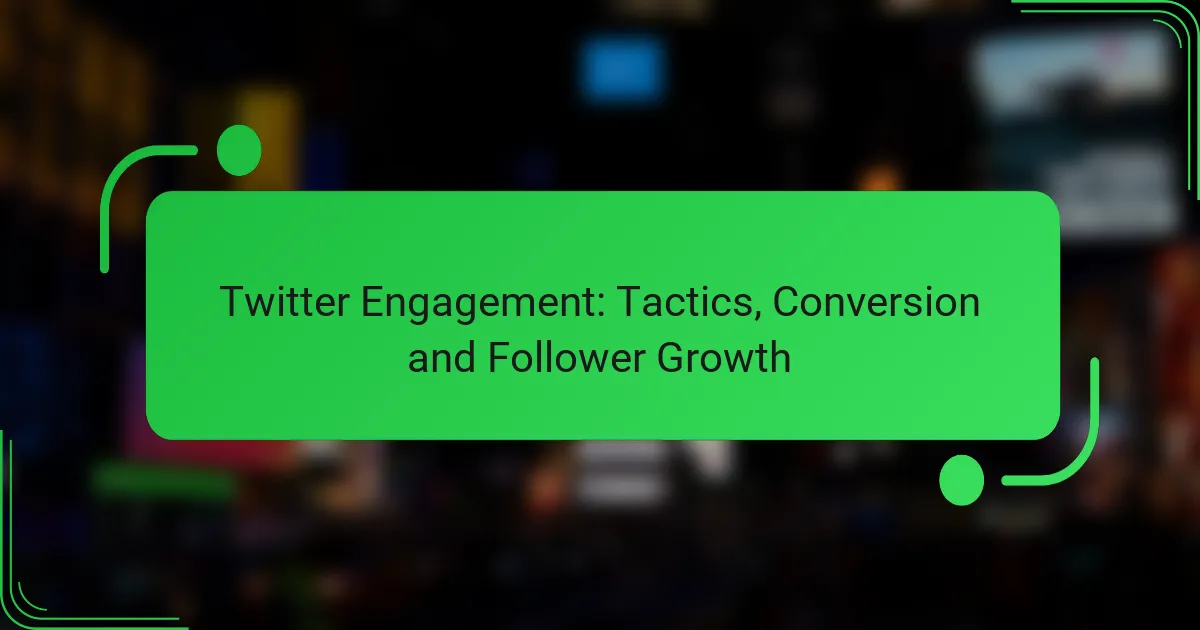Creating shareable content is essential for engaging your audience and driving traffic to your brand. By understanding their needs and preferences, you can produce valuable material that encourages sharing across multiple platforms. Effective distribution strategies, such as leveraging social media and collaborating with influencers, can further enhance visibility and engagement, ultimately boosting lead generation.

How to create shareable content effectively?
Creating shareable content involves understanding your audience and delivering valuable, engaging material that resonates with them. By focusing on their needs and preferences, you can craft content that encourages sharing across various platforms.
Focus on audience needs
Identifying and addressing the specific needs of your audience is crucial for creating shareable content. Conduct surveys, analyze social media interactions, and review feedback to understand what topics and formats resonate most with your target demographic.
Once you have this insight, tailor your content to provide solutions, insights, or entertainment that aligns with their interests. This could mean creating how-to guides, informative articles, or entertaining videos that speak directly to their concerns.
Utilize engaging visuals
Visual elements significantly enhance the shareability of content. Incorporate high-quality images, infographics, and videos to make your content more appealing and easier to digest. Studies show that content with visuals is more likely to be shared than text-only formats.
Ensure that your visuals are relevant and support the message of your content. Tools like Canva or Adobe Spark can help you create eye-catching graphics that align with your brand’s aesthetic and engage your audience effectively.
Incorporate storytelling techniques
Storytelling can make your content more relatable and memorable. By weaving narratives into your content, you can create an emotional connection with your audience, making them more likely to share it with others. Share personal anecdotes, case studies, or customer testimonials to illustrate your points.
Keep your stories concise and focused on the core message. Use a clear structure with a beginning, middle, and end to guide your audience through the narrative seamlessly.
Optimize for social sharing
To maximize the shareability of your content, optimize it for social media platforms. This includes using attention-grabbing headlines, clear calls to action, and share buttons that make it easy for users to distribute your content.
Consider the ideal image sizes and formats for each platform, ensuring your content appears visually appealing when shared. Additionally, crafting compelling meta descriptions can enhance visibility and engagement when your content is shared on social media.
Leverage current trends
Staying updated with current trends can significantly boost the shareability of your content. Monitor social media, news outlets, and industry publications to identify trending topics that resonate with your audience.
Incorporate these trends into your content strategy by creating timely articles, videos, or infographics that provide valuable insights or commentary. This not only positions your brand as a thought leader but also increases the likelihood of your content being shared as it aligns with what people are currently discussing.

What are the best distribution strategies for shareable content?
The best distribution strategies for shareable content focus on maximizing visibility and engagement across various channels. Effective methods include leveraging social media, collaborating with influencers, utilizing email marketing, and implementing content syndication.
Use social media platforms
Social media platforms are essential for distributing shareable content due to their vast user bases and engagement potential. Focus on platforms like Facebook, Twitter, Instagram, and LinkedIn, tailoring your content to fit the audience and format of each platform.
Consider using visuals, such as images or videos, to enhance shareability. Posting at optimal times, such as during peak user activity, can significantly increase visibility and interaction rates.
Engage with influencers
Collaborating with influencers can amplify your content’s reach and credibility. Identify influencers in your niche who align with your brand values and have a genuine following.
Develop mutually beneficial partnerships, such as guest posts or social media takeovers, to tap into their audience. Ensure that the content feels authentic and resonates with both your audience and the influencer’s followers.
Implement email marketing campaigns
Email marketing remains a powerful tool for distributing shareable content directly to your audience. Create segmented email lists to target specific groups with tailored content that encourages sharing.
Incorporate clear calls-to-action (CTAs) that prompt recipients to share the content with their networks. Regularly analyze open and click-through rates to refine your approach and improve engagement.
Utilize content syndication
Content syndication involves republishing your content on third-party sites to reach a broader audience. This strategy can enhance visibility and drive traffic back to your original content.
Choose reputable platforms that align with your niche for syndication. Be mindful of potential SEO implications and ensure proper attribution to maintain your brand’s authority and credibility.

How can shareable content boost lead generation?
Shareable content can significantly enhance lead generation by increasing visibility, fostering engagement, and driving traffic to your offerings. When content resonates with audiences, it encourages sharing, which amplifies reach and attracts potential leads.
Increase brand visibility
Creating shareable content helps elevate brand visibility across various platforms. When users share your content, it exposes your brand to their networks, potentially reaching thousands of new viewers. This organic growth can lead to increased brand recognition and awareness.
To maximize visibility, focus on crafting high-quality, visually appealing content that aligns with your audience’s interests. Utilizing social media platforms effectively can further enhance this visibility, as shares often lead to more followers and engagement.
Encourage user-generated content
Shareable content can inspire users to create their own content related to your brand, which is known as user-generated content (UGC). This not only fosters a sense of community but also serves as authentic endorsements of your brand. UGC can take the form of reviews, testimonials, or social media posts featuring your products.
Encouraging UGC can be achieved through contests, hashtags, or simply asking for feedback. This approach not only boosts engagement but also provides you with valuable insights into customer preferences and experiences.
Drive traffic to landing pages
Effective shareable content can direct traffic to your landing pages, where conversions occur. By including clear calls-to-action (CTAs) within your content, you can guide users to visit specific pages for more information or to make a purchase. This strategy is essential for turning interest into leads.
Consider using enticing headlines and engaging visuals to draw users in. Additionally, optimizing your landing pages for mobile devices ensures that users have a seamless experience, increasing the likelihood of conversion.
Enhance audience engagement
Shareable content enhances audience engagement by encouraging interaction and participation. Engaging content prompts users to comment, like, or share, creating a dialogue around your brand. This interaction not only builds relationships but also keeps your brand top-of-mind.
To boost engagement, create content that invites feedback or discussion, such as polls, quizzes, or open-ended questions. Regularly responding to comments and fostering conversations can further strengthen your connection with your audience.

What metrics should be tracked for shareable content success?
To measure the success of shareable content, focus on metrics that reflect engagement, traffic, and conversions. Key indicators include social shares and likes, website traffic sources, and conversion rates, which together provide a comprehensive view of content performance.
Monitor social shares and likes
Tracking social shares and likes is crucial for understanding how well your content resonates with audiences. High share counts indicate that your content is engaging and valuable, prompting users to promote it within their networks. Aim for a steady increase in these metrics over time to gauge content effectiveness.
Utilize tools like BuzzSumo or native social media analytics to monitor these metrics. Set benchmarks based on industry standards or past performance to evaluate success. For example, a post that garners hundreds of shares may be considered successful, while a few dozen might indicate a need for improvement.
Analyze website traffic sources
Understanding where your website traffic originates is essential for assessing the impact of shareable content. Use analytics tools like Google Analytics to identify which platforms drive the most visitors. This data helps you focus your distribution efforts on the most effective channels.
Look for trends in traffic sources over time. If social media platforms consistently bring in a significant portion of your traffic, consider investing more in those channels. Conversely, if organic search is underperforming, it may be time to optimize your content for SEO.
Evaluate conversion rates
Conversion rates measure how effectively your shareable content drives desired actions, such as sign-ups or purchases. A high conversion rate indicates that your content not only attracts visitors but also persuades them to engage further. Track these rates to assess the overall effectiveness of your content strategy.
To improve conversion rates, consider A/B testing different calls to action or content formats. For instance, if a video generates higher conversions than a blog post, prioritize video content in your future campaigns. Aim for a conversion rate of around 2-5% as a general benchmark, but adjust expectations based on your specific industry and audience.

What are the prerequisites for creating shareable content?
Creating shareable content requires a clear understanding of your audience, a strong value proposition, and effective distribution strategies. These elements ensure that the content resonates with users and encourages them to share it within their networks.
Understanding your audience
Knowing your audience is crucial for creating content that engages and motivates sharing. Conduct research to identify their interests, preferences, and pain points. Utilize surveys, social media insights, and analytics tools to gather data that informs your content strategy.
Once you have a clear profile of your audience, tailor your content to address their specific needs. For example, if your target audience consists of young professionals, focus on topics that enhance their career growth or work-life balance.
Creating valuable content
Valuable content is informative, entertaining, or inspiring, prompting users to share it with others. Aim to provide actionable insights, unique perspectives, or compelling stories that resonate with your audience. High-quality visuals and engaging formats, such as videos or infographics, can enhance the content’s appeal.
Consider using a mix of formats to cater to different preferences. For instance, a blog post can be complemented by a video summary, making it easier for users to consume and share the information.
Effective distribution strategies
Distribution is key to maximizing the reach of your shareable content. Utilize social media platforms, email newsletters, and partnerships with influencers to promote your content. Tailor your distribution approach based on where your audience spends their time online.
Monitor engagement metrics to assess the effectiveness of your distribution strategies. Adjust your tactics based on performance data, focusing on platforms that yield the highest shares and interactions. For example, if your audience is active on Instagram, prioritize visual content for that channel.



